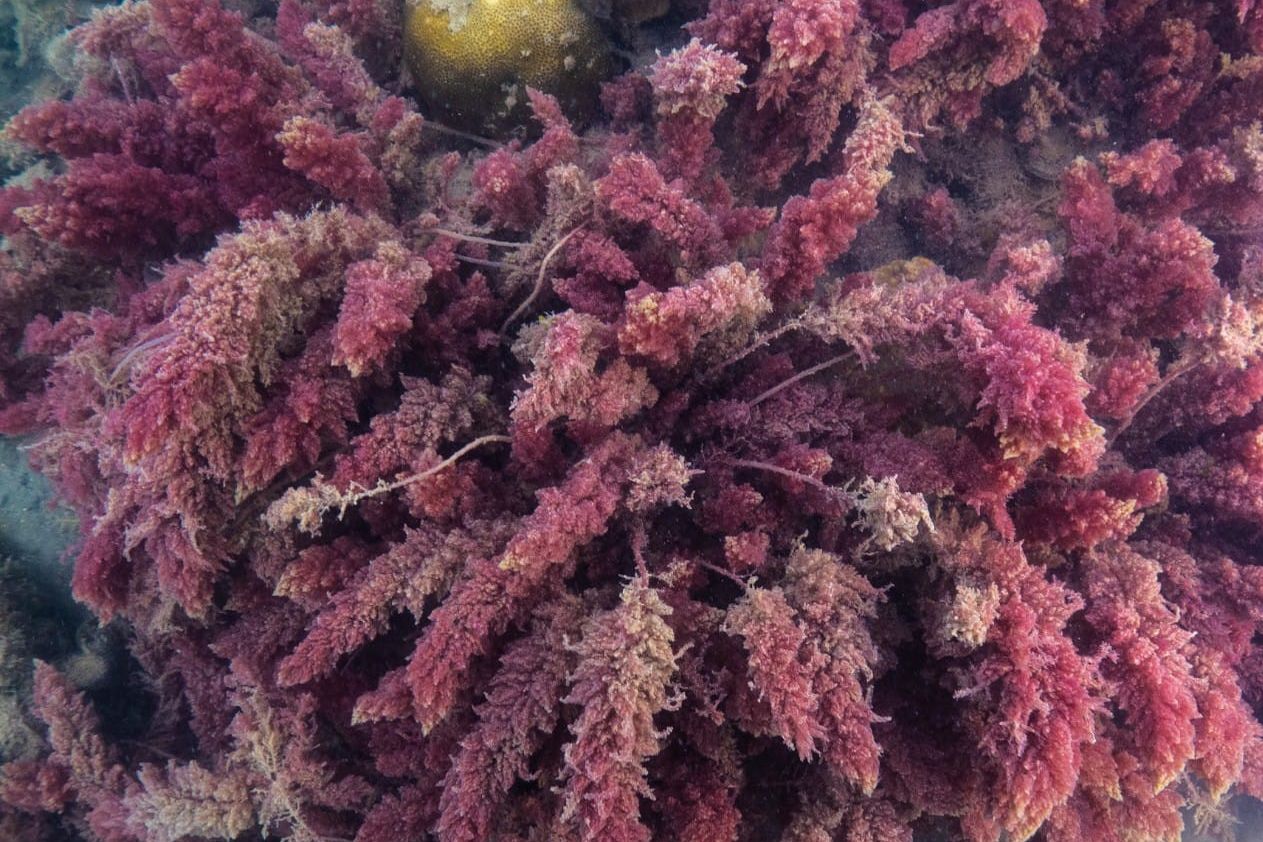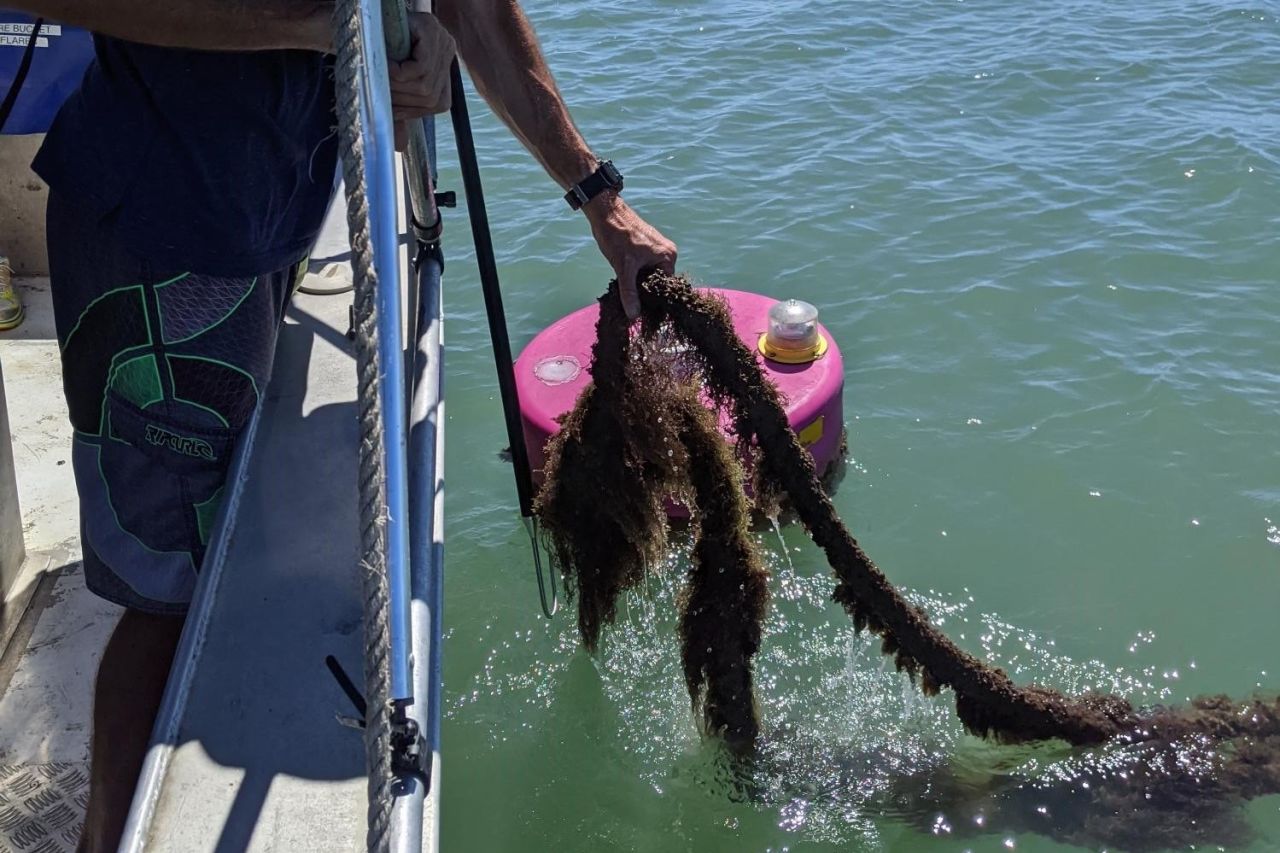An innovative new solution using seaweed to help improve water quality on the Great Barrier Reef is progressing to the next exciting phase of research, with on-water trials beginning next month.
Researchers will test whether native seaweed species placed in strategic locations are effective at soaking up damaging pollutants from the water.
Our partner, the Australian Seaweed Institute, developed the nature-based solution, which has already been recognised by the World Economic Forum as one of the top global innovations for protecting oceans.
What affects Reef water quality?
Every year thousands of tonnes of excess nutrients, such as nitrogen and phosphorous from fertilisers, run off the land and out onto the Reef. This can cause harmful algae blooms, reducing light and smothering corals.
The impacts of rising greenhouse gas emissions are also causing the water to become more acidic as the ocean absorbs higher levels of carbon dioxide - threatening the survival of coral reefs and their marine life.
How can seaweed help?
Seaweed has shown promising potential to act as an effective biofilter, controlling pollution by capturing and breaking down these harmful pollutants. Seaweed is ideal because it absorbs carbon, nitrogen and phosphorous from the water to help it grow and provides habitat for marine life.
Both functions could significantly improve the quality of water and marine biodiversity, improving conditions for the entire Reef ecosystem.

Seaweed absorbs pollutants and provides habitats for marine life. Credit: Australian Seaweed Institute
What's been achieved so far?
In 2020 the first stage of work on seaweed biofilters, the concept design phase, identified three native seaweed species that absorb high levels of nutrients - Asparagopsis taxiformis, Sargassum spp and Gracilaria edulis. Researchers also explored the optimal methods for growing these species and carried out in-tank trials.
This work was a collaboration between the Australian Seaweed Institute and Central Queensland University. They found seaweed biofilters have the potential to remove thousands of tonnes of dissolved inorganic nitrogen - a key Reef pollutant - from the water every year.
What's next?
Under the second stage of research, the proof of concept phase, small seaweed "bio-pods" containing the target seaweed species will be installed in a river estuarine location. These plants will be monitored to see how well they grow and how much nitrogen they absorb. Researchers will then model how the biofilters are likely to perform in various locations across the Reef.







